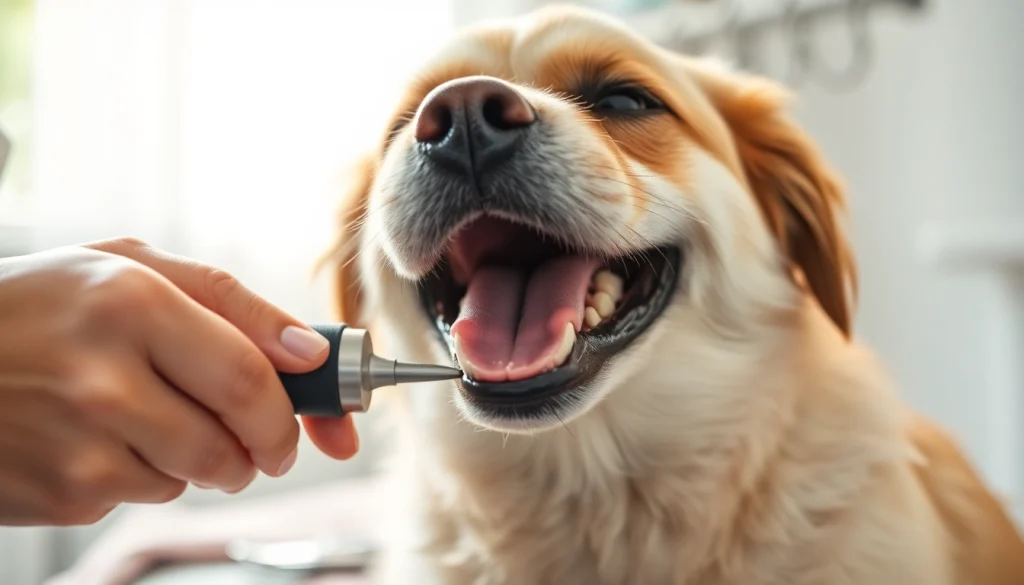Understanding the Importance of Dog Grooming
Dog grooming is more than just a means of keeping your pet looking good; it plays a fundamental role in their overall health and well-being. Regular grooming helps prevent various health issues, enhances the appeal of their coat, and offers a bonding opportunity between you and your canine companion. Given the significance of dog grooming, it’s essential to incorporate it into your pet care routine.
Benefits for Your Dog’s Health
Regular grooming can significantly benefit your dog’s health by identifying potential health issues before they escalate. For instance, frequent brushing allows you to check for lumps, bumps, skin irritations, or parasites, including fleas and ticks. These early detections can lead to prompt treatment, improving your dog’s quality of life.
Moreover, grooming helps maintain your dog’s coat condition. A well-groomed coat can reduce shedding and the buildup of dirt and debris. This is particularly essential for long-haired breeds that can easily develop mats and tangles that can be painful if not addressed. Regular grooming with the right tools, such as a dog grooming nail grinder, can enhance their physical comfort.
Enhancing Coat Appearance
Your dog’s coat is often a reflection of its health. Regular grooming enhances the coat’s appearance by distributing natural oils, making the fur shinier and healthier. Additionally, different dog breeds require varying grooming techniques to maintain their appearance. For instance, a poodle may require more frequent grooming than a short-haired breed like a beagle. Understanding these needs is crucial for maintaining your pet’s aesthetic appeal.
Bonding Through Grooming
Grooming provides an invaluable bonding experience between you and your dog. The act of brushing, bathing, or clipped nails can strengthen your relationship, enhance trust, and promote relaxation for your pet. Over time, as your dog becomes more comfortable with grooming sessions, it can also reduce anxiety during vet visits or other handling episodes, making it a critical part of socialization and training.
Basic Dog Grooming Tools You Need
Having the right tools can make all the difference in your dog grooming experience. A well-equipped grooming toolkit includes various essential supplies tailored to your dog’s grooming needs.
Must-Have Grooming Supplies
- Brushes and Combs: Depending on your dog’s coat type, you’ll need suitable brushes such as pin brushes for long-haired dogs or bristle brushes for short-haired dogs.
- Shampoo and Conditioner: Invest in high-quality, dog-safe shampoos and conditioners that meet your pet’s specific skin needs.
- Dog Nail Grinder: A quality nail grinder will help trim nails without the risk of cutting the quick, promoting a safer experience for both you and your dog.
- Clippers: Suitable clippers will facilitate easy haircuts, especially for breeds that require regular trims.
- Ear Cleaning Supplies: Keeping your dog’s ears clean helps prevent infections. Use vet-recommended cleaning solutions.
Choosing the Right Nail Grinder
When it comes to grooming, one of the most daunting tasks for pet owners is nail trimming. A dog nail grinder provides a safer alternative to traditional clippers, reducing the risk of cutting the quick and causing pain. Look for a grinder that has multiple speed settings and a safety guard to prevent over-grinding. Additionally, consider the noise level; some dogs are sensitive to sounds, so quieter models may be more appropriate.
Grooming Accessories for Every Breed
Different dog breeds have various grooming needs due to coat types, sizes, and temperaments. For instance, breeds like the Shih Tzu or Maltese need specific grooming tools like slicker brushes and cutting scissors, while a Labrador Retriever might only need a rubber grooming mitt for shedding. Assess your breed’s unique needs and ensure that your grooming supplies cater to them to maximize effectiveness.
Step-by-Step Dog Grooming Guide
With the right tools at hand, you can follow a systematic grooming routine that addresses all aspects of your dog’s hygiene and comfort.
Bathing Techniques
Bathing your dog is essential, particularly if they spend time outdoors, get dirty, or have a strong odor. When bathing your dog:
- Use lukewarm water and a dog-specific shampoo. Avoid human shampoos as they can damage your dog’s skin.
- Wet your dog’s coat thoroughly to ensure even shampoo distribution.
- Gently massage the shampoo into your dog’s coat, paying special attention to dirty areas.
- Rinse thoroughly to remove all shampoo, as residues can irritate the skin.
- Dry your dog with a towel or a pet dryer, avoiding extreme heat, which can cause discomfort.
Brushing for Various Coat Types
Brushing should be incorporated into your routine based on your dog’s coat type. Generally, long-haired dogs need brushing every day to avoid mats, while medium-haired dogs may require weekly sessions. Short-haired breeds might only need brushing every few weeks. Here’s a brief overview:
- Long-haired Dogs: Use a wide-toothed comb followed by a slicker brush.
- Medium-haired Dogs: Employ a bristle brush and occasionally a de-shedding tool.
- Short-haired Dogs: Opt for rubber brushes or grooming mitts to remove loose hairs effectively.
Nail Trimming Best Practices
Nail trimming is crucial to prevent your dog’s nails from becoming too long and causing pain or discomfort. Here are best practices to follow:
- Familiarize your dog with the grinder beforehand. Let them sniff it and hear it running without applying it to their nails.
- Choose a comfortable position for both you and your dog. Many owners prefer to have their pets lie down or sit on a grooming table.
- Trim only the tips of the nails. Start with one paw and take breaks if your dog seems anxious, rewarding them with treats for cooperation.
- Remember to check for the quick—the pink area within the nail. Never grind past this point to avoid cutting into it.
Common Dog Grooming Mistakes to Avoid
Even seasoned pet owners can sometimes make mistakes in grooming. Here are some common pitfalls and how to avoid them:
Over-bathing Your Dog
While keeping your dog clean is essential, over-bathing can strip natural oils from their coat, leading to dryness and irritation. Most dogs only require baths every few weeks or when visibly dirty. Always use a gentle, dog-formulated shampoo to avoid harming their skin.
Neglecting Ear and Eye Care
Many pet owners focus solely on the coat and miss essential areas like the ears and eyes. Regularly check and clean your dog’s ears using vet-recommended cleaner to prevent infections. Additionally, keep your dog’s eyes clean by gently wiping away discharge with a damp cloth or specifically designed eye wipes.
Ignoring Your Dog’s Comfort
A critical mistake in grooming is ignoring the comfort and emotional state of your dog. Monitor your dog’s stress levels during grooming sessions, and make adjustments as necessary. Employ positive reinforcement techniques like treats and praise to create a more enjoyable environment for your furry friend.
Finding a Professional Groomer
If you feel that grooming your dog at home is overwhelming, you might consider hiring a professional groomer. Here’s how to make an informed choice:
What to Look for in a Grooming Service
When seeking a professional grooming service, consider the following factors:
- Experience and Qualifications: Look for groomers with certifications and years of experience, particularly with your dog’s breed.
- Facility Cleanliness: The grooming salon should be clean, organized, and free from odors. This is a direct reflection of their commitment to your pet’s health.
- Groomer Attitude: A good groomer should demonstrate kindness and patience toward their canine clients.
Questions to Ask Your Groomer
When interviewing potential groomers, ask them the following questions:
- What techniques do you use for my dog’s breed and coat type?
- How do you ensure the safety and comfort of my dog during the grooming process?
- Can you provide references from previous clients, especially those with similar breeds?
Understanding Grooming Costs
The cost of dog grooming can vary based on multiple factors, including the dog’s size, coat condition, and the specific services needed. On average, pet owners can expect to pay between $30 and $90 per grooming session. Always inquire about pricing upfront, including any possible additional fees for specialized services.


